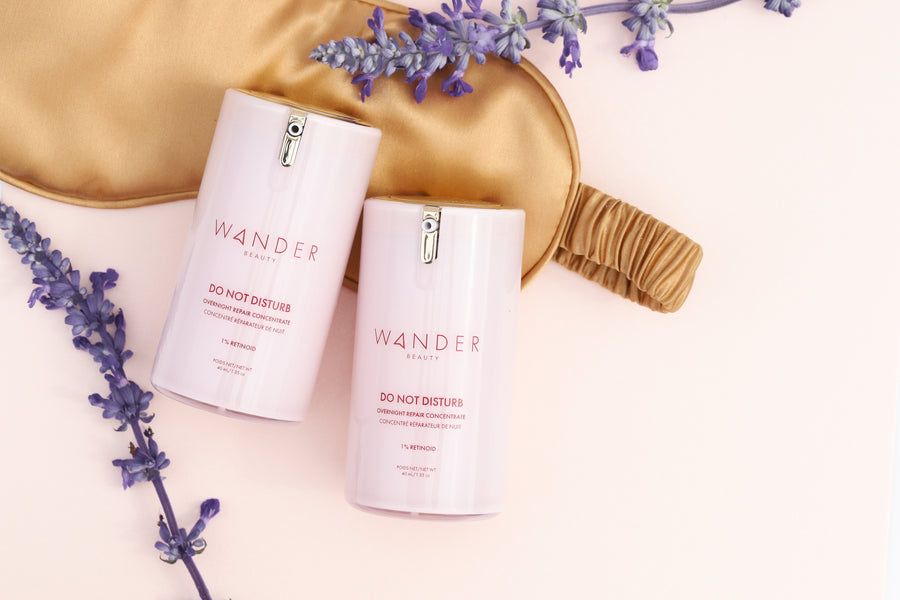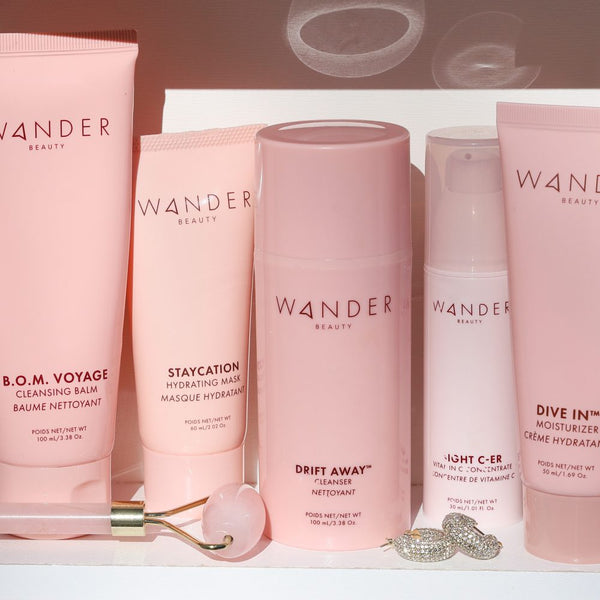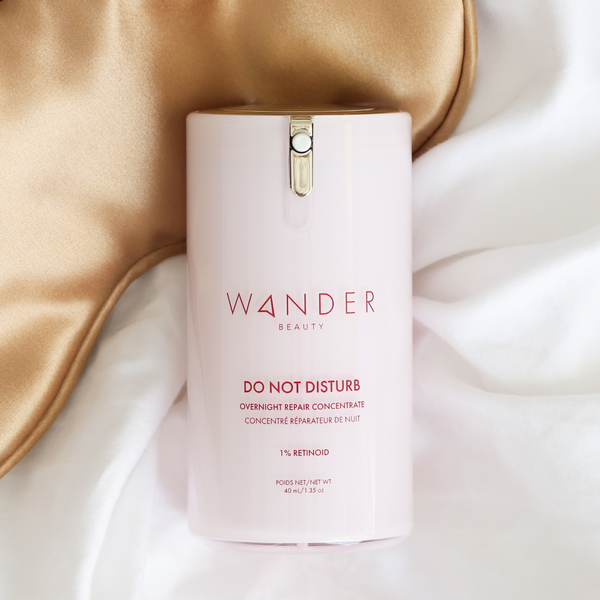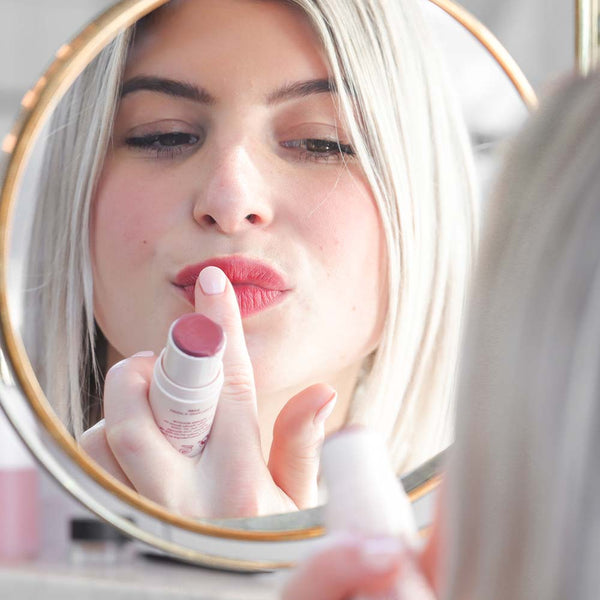How To Treat Skin Pigmentation
By Max Brockbank | May 26, 2021
Consider the fact that your skin is actually your body’s largest organ — there are so many ways that your skin helps take care of you.
For one, it provides a barrier from the harmful environmental stressors in the outside world. It also helps regulate your body temperature. But that’s not even where your skin’s job stops: it’s your body’s largest storeroom, storing water, fat, and beyond. It also produces essential hormones.
What we’re saying is that your skin does a lot for you, and that’s why it is especially important that you nourish it and support it. The products you put on your skin and the manner you treat it is impactful. That said, no matter how well you treat your skin, it can sometimes fall victim to certain conditions.
First thing first: If you’re confident and comfortable in the skin you’re in, that is all that matters.
But, if you want to work on your skin to get your confidence to where you’d like it to be, that’s important, too! It’s totally possible to have gratitude for your skin while wanting to work to improve it.
If you’re struggling with skin pigmentation, there are a couple of ways that you can help improve it. Today, we’re going to walk you through some background, give you some options for how you can work to improve it and talk about when you can start seeing a difference.
What is Skin Pigmentation?
The word “pigmentation” is really just a fancy way to say “coloring.” If you’re noticing that patches of your skin are changing color, you’re experiencing skin pigmentation.
The way that your skin (as well as your hair and eyes) gets its color is from melanin. Melanin is a pigment that is created by special cells within the skin. When those cells either become damaged or are unhealthy, that makes an impact on the production of melanin, which ultimately impacts the pigmentation of your skin.
What Causes Skin Pigmentation?
Skin pigmentation can occur due to a variety of reasons. Scientifically speaking, if you’re experiencing hyperpigmentation, it’s because there is more melanin being produced than usual.
Several factors can account for why your skin is suddenly producing a different amount of melanin than usual, but sun exposure is a leading cause. Another potential cause is your hormones. Age, skin injuries, or skin inflammation can also be contributing factors.
Can Pigmentation Be Removed?
While it is absolutely possible to reduce the appearance of pigmentation, and pigmentation can be removed through a variety of potential clinical treatments, there is always the chance it could come back.
This is where the phrase “an ounce of prevention is worth a pound of cure” is particularly relevant. If you suspect that your pigmentation is the result of poor suncare, you can work towards making sure it doesn’t happen again.
One way to tackle the problem is by visiting your dermatologist’s office. They can provide a robust overview of ways that you can tackle it together. Getting their expertise and advice regarding the potential cause can help you take preventative steps so more spots don’t pop up.
What Are the Best Dermatological Treatments for Pigmentation?
While your doctor will go over the myriad of options there are to treat your skin, we’ve created our own overview so you can come to your appointment prepared.
Chemical Peels
One popular way to treat skin pigmentation is with a chemical peel. Essentially, a chemical solution is applied to your skin in the affected area. The solution is designed to exfoliate, and eventually, leads your skin to gently peel off. The fresh, new skin looks rejuvenated and young.
It’s important to note that if you choose to get a chemical peel, the new skin will also be extra sensitive to the sun. For this reason, you shouldn’t schedule your appointment the day before you’re leaving on a beach vacation or plan on being outside.
And if you do go outside, slather on sunscreen with at least SPF 30 (which really, you should be doing every day anyway).
There are also several different types of chemical peels, and each of them is designed with specific uses in mind. Work with your dermatologist to find the right fit for you.
Laser Peels
Laser peels use beams of light instead of chemicals. The idea is the same, however, as laser peels are also designed to remove unwanted pigmentation.
Laser peels are popular because they can often hone in on a specific area more easily, which allows for the removal process to be more precise. However, with more precision comes a higher overall cost for the procedure.
IPL Therapy
IPL is another form of light therapy that is used to reduce the appearance of several marks on your skin. It’s similar to laser therapy, except it’s different in the way it approaches removal. While laser therapy focuses on just one wavelength of light energy, IPL focuses on multiple wavelengths. This allows it to treat a more sizable area more quickly than traditional laser therapy would be able to.
Microdermabrasion
Microdermabrasion, not to be confused with dermabrasion (which we’ll cover soon), uses a minimally invasive instrument to gently sand your skin and remove the uneven outer layer.
It also helps stimulate collagen production, which is one reason why it’s so popular for people who are looking to have a younger-looking complexion.
Dermabrasion
Before we talk about dermabrasion, we want to put a few things out there.
First of all, it’s important to note that how you look when you leave the appointment with your dermatologist will not be the final product. If your face is red, or even swollen when you leave, it won’t stay like that, so try to refrain from panicking.
It’s especially important with this procedure that you follow your dermatologist’s post-procedure instructions to reduce the likelihood of infection and to ensure your skin heals properly.
Finally, note that with dermabrasion, it could take weeks or even months to get your skin to where you want it to be. This could become time-consuming and costly.
Now that we’ve covered that, let’s dive into talking about the procedure itself. Your dermatologist will use a wire brush or even a diamond wheel equipped with rough edges to level and even remove the top layer of your skin. This allows new skin to grow. This procedure can be uncomfortable, especially if you have sensitive skin or low pain tolerance, so you might be given a topical anesthetic prior to reduce discomfort.
How Can I Treat My Pigmentation at Home?
We get it: pigmentation treatments at your dermatologist’s office can be costly and time-consuming. If you still want to take care of your pigmentation but don’t want a doctor's appointment, you can actually work to improve the appearance of this skin condition at home. There are two ways you can do this: by harnessing the power of skin acids and retinoids.
Skin Acids
Two of the most common acids you’ll see in skincare are alpha hydroxy acids (AHAs) and beta hydroxy acids (BHAs), and we use them both in our Fast Lane Instant Facial™ via:
- Glycolic acid (AHA): Helps to remove the outer layer of dead skin cells to reveal brighter skin, while addressing pigmentation and signs of aging
- Lactic acid (AHA): Protects the skin barrier, boosts water retention and treats hyperpigmentation and age spots
- Salicylic acid (BHA): Gently unclogs congested pores
Our high-impact formula is the ultimate multitasker, working to smooth skin texture, clear out pores, lock in moisture, and minimize the appearance of pores and fine lines, all while being perfect for all different skin types.
With 10% AHA and 2% BHA, you have an instant key to a brighter, more youthful complexion.
Retinoids
Retinoids are a Vitamin A derivative and are renowned for their ability to increase the cellular turnover rate. That means that they could potentially help fade the appearance of dark spots as well because new skin cells are being quickly created.
One easy way to add retinoids into your beauty routine is with our Do Not Disturb Overnight Repair Concentrate — it’s formulated with 1% retinoid to reduce uneven tone and texture while you sleep!
When you first introduce a retinoid into your routine, you may experience a period of retinization while your skin adjusts. This is normal and it should subside within a couple of weeks. It’s also especially important to wear sunscreen during the day if you’re using a retinoid.
*Note: When pregnant or breastfeeding, it is recommended to avoid any skincare products containing retinoids.<product>1</product>
Do Different Treatments Work Better for Different Skin Tones?
Everyone’s skin is different, which means that your skin will react differently to a pigmentation treatment than someone else who has the same skin tone. Here are some helpful guidelines when it comes to figuring out the best treatment for your skin tone.
For people who have darker skin tones, it’s important to avoid treatments, like the IPL, that could potentially traumatize the skin.
For people with lighter complexions, a laser approach might be right for you.
Still, it’s essential to be gentle with your skin either way. If you have any concerns over if you’re picking the right treatment, especially if you have sensitive skin to begin with, ask your dermatologist for help.
How Long Does Pigmentation Take to Fade?
There is truly no one-size-fits-all answer to this question because there are several factors that can impact your skin’s pigmentation, and ultimately, no two people have exactly the same skin.
The type of treatment you use to reduce the appearance of your pigmentation makes an impact on how long it could take to fade. Actively attempting to reduce the appearance of pigmentation with dermabrasion can take several sessions spanning from weeks to months.
By contrast, adding skin acids into your routine is a more casual approach to removing spots that work in the long term.
Conclusion
No matter which way you decide to treat skin pigmentation, there’s one thing you need to keep in mind: always remember to be kind to your skin. We know it can seem intimidating to tackle this, but if it will help you feel more confident, it’s worth it!
Here at Wander Beauty, we support you on your beauty journey. Take the first step towards showing your skin some love today -- however that may be.
How To Treat Skin Pigmentation

Consider the fact that your skin is actually your body’s largest organ — there are so many ways that your skin helps take care of you.
For one, it provides a barrier from the harmful environmental stressors in the outside world. It also helps regulate your body temperature. But that’s not even where your skin’s job stops: it’s your body’s largest storeroom, storing water, fat, and beyond. It also produces essential hormones.
What we’re saying is that your skin does a lot for you, and that’s why it is especially important that you nourish it and support it. The products you put on your skin and the manner you treat it is impactful. That said, no matter how well you treat your skin, it can sometimes fall victim to certain conditions.
First thing first: If you’re confident and comfortable in the skin you’re in, that is all that matters.
But, if you want to work on your skin to get your confidence to where you’d like it to be, that’s important, too! It’s totally possible to have gratitude for your skin while wanting to work to improve it.
If you’re struggling with skin pigmentation, there are a couple of ways that you can help improve it. Today, we’re going to walk you through some background, give you some options for how you can work to improve it and talk about when you can start seeing a difference.
What is Skin Pigmentation?
The word “pigmentation” is really just a fancy way to say “coloring.” If you’re noticing that patches of your skin are changing color, you’re experiencing skin pigmentation.
The way that your skin (as well as your hair and eyes) gets its color is from melanin. Melanin is a pigment that is created by special cells within the skin. When those cells either become damaged or are unhealthy, that makes an impact on the production of melanin, which ultimately impacts the pigmentation of your skin.
What Causes Skin Pigmentation?
Skin pigmentation can occur due to a variety of reasons. Scientifically speaking, if you’re experiencing hyperpigmentation, it’s because there is more melanin being produced than usual.
Several factors can account for why your skin is suddenly producing a different amount of melanin than usual, but sun exposure is a leading cause. Another potential cause is your hormones. Age, skin injuries, or skin inflammation can also be contributing factors.
Can Pigmentation Be Removed?
While it is absolutely possible to reduce the appearance of pigmentation, and pigmentation can be removed through a variety of potential clinical treatments, there is always the chance it could come back.
This is where the phrase “an ounce of prevention is worth a pound of cure” is particularly relevant. If you suspect that your pigmentation is the result of poor suncare, you can work towards making sure it doesn’t happen again.
One way to tackle the problem is by visiting your dermatologist’s office. They can provide a robust overview of ways that you can tackle it together. Getting their expertise and advice regarding the potential cause can help you take preventative steps so more spots don’t pop up.
What Are the Best Dermatological Treatments for Pigmentation?
While your doctor will go over the myriad of options there are to treat your skin, we’ve created our own overview so you can come to your appointment prepared.
Chemical Peels
One popular way to treat skin pigmentation is with a chemical peel. Essentially, a chemical solution is applied to your skin in the affected area. The solution is designed to exfoliate, and eventually, leads your skin to gently peel off. The fresh, new skin looks rejuvenated and young.
It’s important to note that if you choose to get a chemical peel, the new skin will also be extra sensitive to the sun. For this reason, you shouldn’t schedule your appointment the day before you’re leaving on a beach vacation or plan on being outside.
And if you do go outside, slather on sunscreen with at least SPF 30 (which really, you should be doing every day anyway).
There are also several different types of chemical peels, and each of them is designed with specific uses in mind. Work with your dermatologist to find the right fit for you.
Laser Peels
Laser peels use beams of light instead of chemicals. The idea is the same, however, as laser peels are also designed to remove unwanted pigmentation.
Laser peels are popular because they can often hone in on a specific area more easily, which allows for the removal process to be more precise. However, with more precision comes a higher overall cost for the procedure.
IPL Therapy
IPL is another form of light therapy that is used to reduce the appearance of several marks on your skin. It’s similar to laser therapy, except it’s different in the way it approaches removal. While laser therapy focuses on just one wavelength of light energy, IPL focuses on multiple wavelengths. This allows it to treat a more sizable area more quickly than traditional laser therapy would be able to.
Microdermabrasion
Microdermabrasion, not to be confused with dermabrasion (which we’ll cover soon), uses a minimally invasive instrument to gently sand your skin and remove the uneven outer layer.
It also helps stimulate collagen production, which is one reason why it’s so popular for people who are looking to have a younger-looking complexion.
Dermabrasion
Before we talk about dermabrasion, we want to put a few things out there.
First of all, it’s important to note that how you look when you leave the appointment with your dermatologist will not be the final product. If your face is red, or even swollen when you leave, it won’t stay like that, so try to refrain from panicking.
It’s especially important with this procedure that you follow your dermatologist’s post-procedure instructions to reduce the likelihood of infection and to ensure your skin heals properly.
Finally, note that with dermabrasion, it could take weeks or even months to get your skin to where you want it to be. This could become time-consuming and costly.
Now that we’ve covered that, let’s dive into talking about the procedure itself. Your dermatologist will use a wire brush or even a diamond wheel equipped with rough edges to level and even remove the top layer of your skin. This allows new skin to grow. This procedure can be uncomfortable, especially if you have sensitive skin or low pain tolerance, so you might be given a topical anesthetic prior to reduce discomfort.
How Can I Treat My Pigmentation at Home?
We get it: pigmentation treatments at your dermatologist’s office can be costly and time-consuming. If you still want to take care of your pigmentation but don’t want a doctor's appointment, you can actually work to improve the appearance of this skin condition at home. There are two ways you can do this: by harnessing the power of skin acids and retinoids.
Skin Acids
Two of the most common acids you’ll see in skincare are alpha hydroxy acids (AHAs) and beta hydroxy acids (BHAs), and we use them both in our Fast Lane Instant Facial™ via:
- Glycolic acid (AHA): Helps to remove the outer layer of dead skin cells to reveal brighter skin, while addressing pigmentation and signs of aging
- Lactic acid (AHA): Protects the skin barrier, boosts water retention and treats hyperpigmentation and age spots
- Salicylic acid (BHA): Gently unclogs congested pores
Our high-impact formula is the ultimate multitasker, working to smooth skin texture, clear out pores, lock in moisture, and minimize the appearance of pores and fine lines, all while being perfect for all different skin types.
With 10% AHA and 2% BHA, you have an instant key to a brighter, more youthful complexion.
Retinoids
Retinoids are a Vitamin A derivative and are renowned for their ability to increase the cellular turnover rate. That means that they could potentially help fade the appearance of dark spots as well because new skin cells are being quickly created.
One easy way to add retinoids into your beauty routine is with our Do Not Disturb Overnight Repair Concentrate — it’s formulated with 1% retinoid to reduce uneven tone and texture while you sleep!
When you first introduce a retinoid into your routine, you may experience a period of retinization while your skin adjusts. This is normal and it should subside within a couple of weeks. It’s also especially important to wear sunscreen during the day if you’re using a retinoid.
*Note: When pregnant or breastfeeding, it is recommended to avoid any skincare products containing retinoids.<product>1</product>
Do Different Treatments Work Better for Different Skin Tones?
Everyone’s skin is different, which means that your skin will react differently to a pigmentation treatment than someone else who has the same skin tone. Here are some helpful guidelines when it comes to figuring out the best treatment for your skin tone.
For people who have darker skin tones, it’s important to avoid treatments, like the IPL, that could potentially traumatize the skin.
For people with lighter complexions, a laser approach might be right for you.
Still, it’s essential to be gentle with your skin either way. If you have any concerns over if you’re picking the right treatment, especially if you have sensitive skin to begin with, ask your dermatologist for help.
How Long Does Pigmentation Take to Fade?
There is truly no one-size-fits-all answer to this question because there are several factors that can impact your skin’s pigmentation, and ultimately, no two people have exactly the same skin.
The type of treatment you use to reduce the appearance of your pigmentation makes an impact on how long it could take to fade. Actively attempting to reduce the appearance of pigmentation with dermabrasion can take several sessions spanning from weeks to months.
By contrast, adding skin acids into your routine is a more casual approach to removing spots that work in the long term.
Conclusion
No matter which way you decide to treat skin pigmentation, there’s one thing you need to keep in mind: always remember to be kind to your skin. We know it can seem intimidating to tackle this, but if it will help you feel more confident, it’s worth it!
Here at Wander Beauty, we support you on your beauty journey. Take the first step towards showing your skin some love today -- however that may be.







